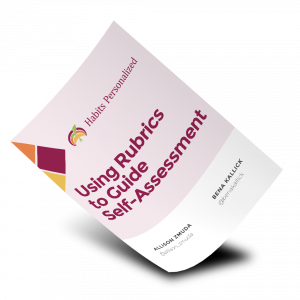Habits Personalized
Using Rubrics to Guide Self Assessment Toolkit
Using Rubrics to Guide Self Assessment Toolkit
Couldn't load pickup availability
How can we bring learners into making use of rubrics to benefit their learning? How can rubrics become a trusted guide for learners to self-evaluate and improve their work? This toolkit focuses on how to grow learners’ capacity to become more self-assessing by examining and learning how to use the scoring descriptors in a rubric to improve their performance.
Included in this toolkit:
Tool 1: How to Revise Rubrics to Promote Self-Assessment
When learners participate in the revision of the grading tool, they give voice to what they value as high quality performance. This tool helps to guide learners as they work to revise rubric descriptors to make the language clearer, more precise, and growth-oriented.
Tool 2: Selecting a Rubric that Works With Your Learners
The goal of any effective rubric is to identify what quality looks like in language that is clear, accessible, and actionable for learners. This tool aids teachers in choosing a scoring tool that best matches the work to be scored, promotes clarity for learners, and serves as a guide as learners grow their capacities over time.
Tool 3: How to Help Learners Use Rubrics to Guide Workflow
Using the rubric with learners to gauge where they are and what they might need are critical, especially in remote or hybrid learning situations. Since conferencing opportunities may be limited, teaching learners how to use the rubric to guide their development of work may be even more significant. With this tool, learners apply rubric descriptors to examine work in progress and identify next steps on the road to completion.
Tool 4: Using Rubrics to Guide Self-Assessment
When learners engage in self-assessment, they develop the capacity to judge their work on the basis of descriptive scoring criteria. This tool strengthens their ability to recognize how to support the claim that they are meeting the criteria in the rubric with evidence in the work itself. As students practice the relationship between claim and evidence, they strengthen their use of the rubric as a guide.
Share


